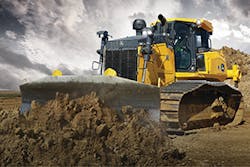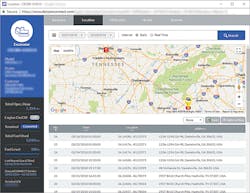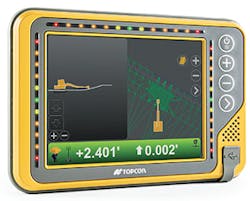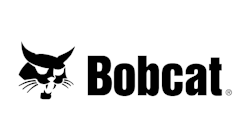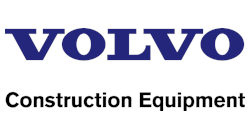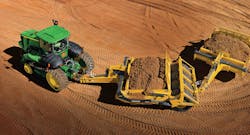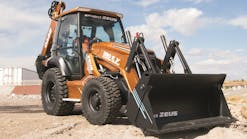The greatest productivity-enhancing features on new heavy equipment are digital—not mechanical. Machine size, attachment size, swing speed, travel speed…none of these changes have the potential to unlock productivity and efficiency in the same manner that digital technologies can. The technologies that have the greatest influence over heavy equipment production and use are machine control and fleet management.
Historically, the construction industry has been slow to adopt technology. Complexity and constant change are the largest reasons for slow adoption. However, technologies such as fleet management and machine control are now reaching a tipping point.
According to Market Research Future, the Machine Control System market is expected to grow at a compound annual growth rate of 14% percent until 2023 and is estimated to generate $8 billion market revenue by 2023, growing with 14% CAGR (compound annual growth rate) during the forecast period 2017 to 2023.
“We put more technology on a bulldozer than there is on a 747 jet,” said Ray O’Connor, president and CEO of Topcon Positioning Systems in his opening remarks to the Infrastructure and Technology Summit on May 9 in Pleasanton, CA.
Hemisphere GNSS designs and manufactures hardware and software for the construction market. On a construction job site, for instance, they offer products, solutions, and technologies for job site managers and supervisors, such as GNSS antennas and receivers, ruggedized handheld tablets, and site management software. They also have GNSS-based hardware and software offerings to outfit heavy equipment and machinery for applications such as grading, mining, excavating, drilling and piling, and compaction.
“GNSS/GPS technology for use in machine control and guidance is not new. It has been around for a while, but it is taking a long time for adoption rates to rise. This could be due to several factors, but two of the largest culprits are cost and learning curve,” says Gabriel Grenier-Baird, marketing manager, Hemisphere GNSS.
- Learning Curve: “The technology isn’t as easy as ‘setting it and forgetting it.’ There is a lot of calibration to do to the machines and systems in order for them to work as designed or as precisely as they should,” says Gabriel Grenier-Baird. “There are ‘expert’ calibrators that can achieve these certain parameters to make the technology work properly, such as RTK base-station setup, site calibration and localization, and data preparation, among others. Any piece of heavy machinery using GNSS/GPS-base equipment must be calibrated and localized properly within reference to its parameters so that it can provide the most accurate data available.”
- Cost: “The cost of these new systems isn’t inexpensive,” he continues. “Depending on what application you are using it for (grading, excavating, drilling and piling, etc.), there are additional features including software or hardware that could significantly increase the overall cost of the systems. However, the benefits in the long run oftentimes outweigh the initial investment. For instance, GNSS/GPS-base machine control and guidance can allow contractors to finish jobs much quicker, thus saving time on a specific job site and moving onto the next one. They also help save time by being as accurate as needed, saving input costs for materials used, fuel consumption, etc.”
More Productivity, Less Work
Case: Case has recently introduced the SiteControl CoPilot system. Available factory-installed or as a retrofit on select Case M Series dozers, the CoPilot system bridges the gap between automatic and indicate-only systems and offers a cost-effective entry into two- and three-dimensional (2D and 3D) machine control technology.
“The Case SiteControl CoPilot system is the result of our partnership with Leica Geosystems, and is comprised of an inertial measurement unit, wiring harness, and in-cab display,” says Richie Snyder, solutions marketing manager, Case Construction Equipment. “The easy-to-use system allows operators to set a desired slope/grade reference and automatically holds that slope/grade without the need for lasers, masts, or GPS—regardless of underfoot conditions—enabling both seasoned and less-experienced operators to easily achieve and maintain a smooth surface, slope, or grade throughout the work area.”
Once the operator has set the slope/grade specifications, the system automatically adjusts blade position to produce a reliable and consistent quality surface, eliminating the need for additional passes and re-work and reducing fuel and labor costs. An integrated in-cab display provides real-time data to the operator.
“We have also recently developed a universal machine control option for our production class M Series dozers (1150M, 1650M, and 2050M) that makes each machine factory compatible with all major suppliers of machine control technology, including Topcon, Trimble, as well as our precision partner Leica Geosystems, within a single ‘universal machine control’ option,” says Snyder.
Case universal machine control provides a universal harness for blade guidance systems, universal machine brackets and mounts, and universal jumpers to integrate any industry solution into each dozer. This allows Case dozers to be deployed, straight from the dealer, into any fleet-wide precision or machine control.
Caterpillar: In November 2017, Caterpillar announced the new Cat 320 and 323, equipped with integrated Cat Connect Technology, which increases operating efficiency by up to 45% over traditional grading operations, claims the company. “As new machines are being developed we are integrating more and more into the machine, from displays to sensors. With our next generation machines, we are not only focusing on Grade Control, we are offering Payload standard on excavator models and machine technology features like E swing and swing assist that help both repetitive operator functions and job site safety,” says Scott Hagemann, technology application specialist, Caterpillar.
Cat Grade for Dozers helps operators achieve target grade faster with fewer passes for better quality and less rework while decreasing the need for string lines and checkers. The machines provide cut and fill data, as well as automated controls that improve accuracy and efficiency. Eliminating checkers means there is less time crew are working near the machine, thereby decreasing the risk of a struck by equipment type of injury. The company claims the system will boost productivity by up to 50% over traditional grading, while reducing operator inputs by up to 80%. Reducing operator input decreases operator fatigue.
John Deere: SmartGrade is John Deere’s fully integrated grade control system available on Deere’s 650K through 950K dozer models. “Customers are thrilled with SmartGrade,” says Andrew Kahler, product marketing manager for John Deere WorkSight. “SmartGrade combines integrated grade control with machine automation. The system uses a 3D model of the job site to control the cutting edge of the blade and enables the operator to achieve final grade quickly and accurately. Taking it one step further, the system also has a feature called Auto SmartGrade which manages the load on the blade to minimize track slip and maximize the productivity of each pass.”
Another benefit to John Deere SmartGrade is that it’s a mastless system; having GPS receivers on top of the blade mast makes them more subject to damage and theft. John Deere places them conspicuously on the cab. Also, the system comes fully integrated with John Deere’s telematics system, JD Link, which constantly monitors the health of the machine and grade control system, so if the grade control systems start having errors, those errors are communicated to the fleet manager and dealer to help drive quick resolution.
“We’ve taken it a step further and integrated it into the machine control and even into the crawler controls,” says Kahler. “Auto Smartgrade manages the load on the blade to prevent track slip. For example, if the design plan calls for a 3-foot cut from where the current blade is, then the blade will hunch 3 feet below the existing surface and when the blade reaches maximum productivity level without having any track slip, it stops the blade there, carries the material until the operator backs up and loads again. And it will do that with every pass. Maximizing material means fewer passes. A job site can turn into a critical situation if you can’t finish the grade.”
Komatsu: Komatsu recently introduced the PC390LCi-11 intelligent machine control hydraulic excavator. The 257-horsepower (hp) machine is the fourth in the company’s intelligent machine control line up. The machine delivers the exceptional production speed of the PC360LCi-11 with an increased stability due to an upsized undercarriage. It includes full factory 3D GNSS machine control and is well-suited for applications such as utilities and mass excavating.
“Traditionally, before the introduction of our machine control technology, there was a high learning curve for new operators to work efficiently and accurately; it really took a skilled operator to work efficiently from rough to finish grade, even for a skilled operator, it wasn’t uncommon to have to go back and adjust the working surface a tenth or two in order to get to finish grade,” says Sebastian Witkowski, product marketing manager for intelligent machine control, Komatsu.
Todd Connolly, Komatsu Australia’s general manager, Construction Solutions, says it has the potential to change the face of earthmoving.
“Today, we can eliminate grade stakes. With Komatsu’s intelligent machine control equipment, operators have real-time GNSS information at their fingertips so their accuracy is known all the time. This translates to greater productivity, not just when it comes to finishing grading, but rough digging as well,” says Witkowski. “The beauty of Komatsu’s intelligent machine control equipment is that it makes good operators out of new operators and makes great operators better. It’s a fully integrated, semi-autonomous system that goes beyond indicate-only systems. Operators can reach the bottom of their trench the first time and save on material costs, such as bedding. They can easily dial in material thickness offsets accurately the first time.”
“In trenching applications, with Komatsu intelligent machine control excavators, we’ve seen time savings of 10–50% when compared to machines equipped with aftermarket guidance systems. In addition, we are seeing bedding material savings of up to 40% in trenching applications,” says Witkowski.
Topcon: The Topcon Positioning Group X-53x is the company’s latest 3D machine control system; it is faster, modular, and an easily upgradeable aftermarket solution for excavation.
“It features fully integrated GR-i3 receivers for precise positioning of the boom, stick, and bucket at all times, as well as the MC-X1 controller, which offers compatibility with all brands and models of excavators and provides a customizable machine control platform to address future project demands,” says Murray Lodge, senior vice president and general manager for the Topcon Construction Business Unit. “The X-53x maximizes the output of your excavator up to 30% more than machines without a 3D system.”
Topcon Positioning Group has recently worked with Volvo CE to establish a system that allows Topcon 3D machine control software (3D-MC) to seamlessly integrate with the Volvo CE Dig Assist real-time guidance system for a large range of excavators.
“We are excited to see the current Volvo CE Dig Assist machine control solution expanded to now handle 3D, through our collaboration with Topcon. The Topcon 3D-MC solution can be added as an ‘app’ on our Co-Pilot platform, connecting our machine to the Topcon eco-system that many of our customers already use,” says Jeroen Snoeck, Volvo Construction Equipment, director of Connected Services.
Trimble: The Trimble Earthworks Grade Control Platform is Trimble’s next-gen machine control solution. Trimble Earthworks is available for excavators and dozers and offers the industry’s first integrated 3D aftermarket excavator automatics capability, claims the company. The Trimble Earthworks Grade Control platform is built on the Android operating system and runs on a 10-inch Trimble TD520 touch-screen display.
“The addition of an ‘Autos’ mode makes it easy for excavator operators to create smooth, flat or sloped surfaces,” says Scott Crozier, general manager of Trimble’s Civil Engineering and Construction Division. “When the excavator is placed in Autos mode, the operator controls the stick and Trimble Earthworks controls the boom and bucket to stay on grade, reduce overcut, and increase production. By automating excavator operation, Trimble Earthworks allows operators to achieve grade consistently, with high accuracy, and in less time.”
Trimble Earthworks for Dozers mounts dual GNSS receivers on top of the cab to eliminate masts and cables traditionally located on the blade. The dual GNSS receivers are ideal for steep slope work and complex designs with tight tolerances.
Volvo: Volvo offers several machine control features including Load Assist, which is a load-weighing management system for Volvo wheel loaders; Volvo Compact Assist, which is an Intelligent Compaction system for soil and asphalt compactors that provides important information such as mapping, temperature mapping, and real-time density calculations; and Volvo Dig Assist, which helps dig accurately to within 3/4-inch.
“Volvo Dig Assist is an intuitive machine control solution for Volvo crawler excavators that provides real-time guidance to the operator, ensuring job parameters are met more quickly, more accurately, and with improved site safety,” says Matt McLean, GPE product manager, Volvo Construction Equipment. “The system is user-friendly and intuitive, with operators often only needing around 10 minutes of upfront training and a few touches on the Volvo Co-Pilot’s 10-inch display to get started. From there, the operator can select the type of project they want to do, set the parameters such as depth and slope, then place the tooth of the bucket on the ground to allow the computer to register the excavator’s location in relation to the project. The operator can also choose from a variety of prebuilt digging profiles, or with the optional In-Field Design, they can draw custom digging profiles directly from the cab without the need for an on-site engineer or surveyor.”
Making Informed Decisions
Heavy Equipment managers of large fleets are responsible for perhaps the largest capital cost of a construction company—the heavy equipment. Data provided by telematics is giving them a lot more information they can use to make informed decisions.
“Ten years ago, customers were in the early stages of telematics adoption,” says Kahler. “Today, with John Deere, customers not only have adopted telematics but are leveraging the insights to better manage their fleets.”
The John Deere telematics system is installed on all large John Deere construction equipment and comes from the factory with five years of service. “John Deere dealers and John Deere’s Machine Health Monitoring Center in Dubuque help look over the health of machines across the United States and Canada,” says Kahler. “Dealers help monitor the health of machines in their local area while Deere’s Machine Health Monitoring Center looks for trends across the country. When the Machine Health Monitoring Center identifies a trend, they diagnose the root cause, define a resolution, and deploy the resolution to dealers to help prevent downtime.
In addition to machine health monitoring, JDLink also provides customers with highly valuable information including hours, location, and diagnostic trouble. Additionally, there are features, such as GeoFence and Curfew that can alert the customer when a machine has left a predefined area or operated outside of a predefined time of day.
Doosan Infracore North America recently introduced an updated version of its existing telematics program—Doosan CONNECT.
A screen shot of the DoosanConnect machine location page
“The newest version of the online portal is vastly improved over the old system; much of the data—the back end of the system—is similar, but the front end—the user interface—is more intuitive, user-friendly, and features more out-of-the-box standardized reporting,” says Aaron Kleingartner, marketing manager, Doosan. “With the new system, customers can customize the look and where things are on the page, as well as customize alerts for users. It is even customizable to each individual user.”
The system has a new geo- and time fence. “A customer can physically draw a shape on the map and if the machine leaves that area, it will give them an alert. ‘Hey! Was this supposed to happen? You better check on it,’” says Kleingartner. “The same thing for the time. You can set up a window during the day based on your regular working hours. If there is activity outside of that, maybe there is something going on that shouldn’t be. Expert fleet managers use this information to get a better understanding of, ‘Do I need another machine? Am I too heavy on lifting? Could I get by with fewer machines? Can I move this machine to another site and make more revenue?’”
From the utilization perspective, there are a lot of things you can look at, such as how many hours per day is being used, fuel use, and the power mode that it’s in. “This data will let you know ‘Is the machine in the right location? Do I need additional assets here? Or do I have the ability to move this machine to another site?’ So, you can really gauge your productivity with the machine,” says Kleingartner.
Doosan articulated dump trucks (ADTs) have additional functions and features available, such as the amount of material moved, load count, and average material per load. “It gives you a sense of, ‘Could I be more efficient? Is there a lot of idle time? Maybe I need a larger machine to load the truck? Or, maybe I need another truck to keep the excavator busy.’ There are a lot of little data points collected from multiple machines that help put the picture together,” says Kleingartner.
“Caterpillar has a range of fleet management solutions to meet different customers’ needs. These solutions range from my.cat.com for those getting started, to VisionLink, which provides more in-depth data and fleet management capabilities,” says Hagemann. “These tools let customers see what’s going on with individual machines, whole job sites, or entire fleets both quickly and easily. These useful insights help improve decisions and can be sent automatically to those who need it. We consider the fleet to be everything from light towers to large machinery, and each offering gives the customer what they need when they need it to help them run their operation more efficiently and profitably.”
Trimble offers several fleet management options including VisionLink, which has features for tracking machine utilization, fuel consumption, maintenance schedules, machine health, and more; VisionLink Landfill, which offers volume and density calculations, compaction mapping, multi-site tracking, landfill life estimates, and more; TrimFleet technology, which is specifically designed for aggregates and ready-mix vehicles, allows monitoring of concrete quality and dispatch processes in real-time, including features for improved driver safety, communication, fuel tracking, vehicle maintenance, and more; and the LOADRITE X2350, which provides payload tracking and real-time material movement visibility for excavators.
“Trimble PULSE is an end-to-end solution for automating operational workflows through telematics that makes it easy for equipment dealers and rental companies to streamline operations and deliver top-notch field service and equipment rental experiences to construction contractors,” says Crozier. “The Trimble PULSE suite offers a range of capabilities including automated scheduling and dispatching tools for service and maintenance; mobile technician solutions; and the ability to monitor mobile assets, vehicles, and work status. Vehicle and asset information can be exchanged between Trimble PULSE and VisionLink for dealers and contractors who want a single view of their integrated operations.
Takeuchi offers our Takeuchi Fleet Management system or TFM. TFM is a remote telematics system designed to connect users with their Takeuchi machines allowing them to monitor machine vitals, location, and maintenance data. “By having the ability to monitor the health and maintenance needs of their machines remotely, owners can better prepare for service calls and the scheduling of maintenance on their machines without having to go out to the job site,” says Lee Padgett, product manager at Takeuchi-US. “Having the machines’ vitals at your fingertips allows contractors to take a wide view of their entire fleet from a central location. Many times, a customer can avoid costly repairs by proper machine maintenance before a problem arises. Having real-time data allows customers to do just that.“
“Wacker Neuson offers telematics packages and subscriptions for all of our compact equipment (excavators, skid steers, track loaders, wheel loaders, and dumpers). Using satellite and mobile communication technology, the owner can receive data remotely from their machines,” says Jay Quatro, field application and training specialist, Wacker Neuson. “This information includes GPS location, hours, fuel level, runtimes, and even engine operation data (on select machines). This technology can give the owner or rental house insight into machine efficiency and troubleshooting, as well as machine location.”
“Our Komtrax system is a free system we offer to distributors and end-users that gives the ability to remotely monitor machine health and telematics from the office, such as fuel consumption, operating hours, machine use, location, and how often an operator is using machine control. It’s a really strong tool for managing fleets. And, if an issue does arise, you can troubleshoot more quickly and reduce downtime. The ability to visually view machine health really empowers distributors to be proactive and address issues before they happen,” says Witkowski.
Volvo Construction Equipment offers a fleet management system unique to the market,” says David Adams, sales manager, connected services, Volvo Construction Equipment. “ActiveCare Direct utilizes Volvo’s telematics system, CareTrack, to capture thousands of data points from machines in real time. The big difference between ActiveCare Direct and other telematics systems is what happens to that information. Instead of sending every alarm code to the machine owner or dealer and requiring them to determine what needs immediate attention, ActiveCare Direct and Volvo relieve them of the burden. Volvo’s proprietary system automatically sorts, filters, and prioritizes alarm codes into only those that require action from the owner or dealer. The information is sifted through by a team of data analysts at the Volvo Uptime Center to determine issues with the machine actually in need of your attention. The owner can choose to be alerted by Volvo or the alerts can exclusively go to the dealer. ActiveCare Direct doesn’t just notify you of current machine issues but also analyzes machine operation and log data to predict failures before they arise in helping the customer meet their goals of no unplanned downtime.”
Adams continues, “We also provide monthly utilization reports, which give owners and dealers an overview of the fleet’s performance, efficiency, hours, and instances of machine misuse. This lets owners and dealers be proactive in developing operator training programs that focus on reducing wear and tear on the machine, as well as increasing overall fleet utilization.”
The Topcon GX-55 monitor provides a high-quality graphical interface experience for
modern machine control.
Putting It to Good Use
“First, talk to your sales specialist to find out what you can do with it. Then use it and fine-tune how you use it to meet the needs of your business,” says Kahler.
“Use it. Log in. Check the capabilities. Set up some alerts to give you notifications. See what the system can do for you, individually,” says Kleingartner. “Then you can get into machine history, utilization reporting, feature reporting—meaning, ‘Is the machine being operated in power, standard, or economy mode? How often are attachments being used?’”
“One owner of several hundred wheel loaders estimated $400,000 in annual savings thanks to AcitveCare Direct’s monthly reports showing their operators making high-speed shifts,” says Adams. “Those shifts caused extra wear on the machines’ transmissions and their company was doing up 10 repairs a year—each job estimated to cost $40,000. Another data point showed this same owner that some operators were braking too frequently, which raised the temperature of the axle and led to more frequent brake repairs. They estimated their savings from fewer brake repairs at up to $300,000 per year.”
“Time is money for today’s contractor. Machine downtime can be expensive and has a ripple effect across a job site. One way a machine owner can prevent breakdowns is by performing routine and scheduled maintenance on their machines,” says Quattro. “A telematics system can be used to track the runtime and hours of a machine and notify the service department at predetermined intervals when service is due. Because all of this is done remotely and in the background, the contractor can spend less time tracking maintenance and more time operating.”
Quattro continues, “Another way telematics can be used to save the contractor money is remote troubleshooting. When a machine goes down on a job site, this typically triggers a service call back to the shop or yard. Advances in this technology allow us to pull more detailed engine data from certain machines including fault codes, operating pressures, and temperatures. Using this information, a service tech can quickly diagnose an issue with a downed machine remotely and bring the proper tools and parts on the service call. Ultimately this increases response time and repairs which leads to direct cost savings to the contractor.”
“Taking it one step further, telematics also offers contractors the ability to monitor engine RPMs,” says Snyder. “This can give equipment owners even greater insights into machine utilization on a job site—it can also help to extend the life of wear components. Bucket teeth, cutting edges, or bristles on a hydraulic broom are typically replaced on an hourly schedule, regardless of how a machine is being used. Differentiating between working and non-working hours can help redefine maintenance intervals on certain wear components, and monitoring RPMs via telematics allows business owners to differentiate between different working situations for a machine.”
Snyder continues: “Another simple way that telematics technology can have an immediate impact on a business is through the prevention of theft and unauthorized usage. Telematics systems are capable of establishing geofences around areas where equipment doesn’t belong. This can be as simple as alerting a fleet manager when a machine leaves a job site, or as advanced as setting up geofences around weight-limited roads to alert the owner if the truck hauling that machine went somewhere it wasn’t supposed to go, which could expose the company to potential fines.”
“Contractors can improve utilization by knowing if, when, where, and how every asset is being used,” says Hagemann. “They can reduce idle time on their equipment by monitoring their fleet then introducing policies to reduce idle and fuel burn. Contractors can also better manage servicing their equipment to avoid costly downtime. Additionally, leveraging telematics, contractors can spot opportunities to train operators to help improve their performance and get the most out of the equipment. Finally, safety is a top priority for everyone in this business and contractors can know when unsafe events occur and act quickly to prevent accidents.”
When it comes to saving big money during daily operation, Kleingartner recommends monitoring fuel use. “We’ve had a number of customers tell us when they used the system they were surprised how much idle time is happening with their equipment. There are features available in our machines that, if desired, can turn the machine off after a pre-set amount of idle time. And that can save a lot of investment into one of the largest input costs, which is fuel.”
“Then learn how to use the data to map out the utilization of the machine by understanding in a given workday, work week, work month, what are my expectations for that machine on a job site,” says Kleingartner. “What is it being used for? As your fleet grows and maybe multiple job sites going on at the same time, you can really get a good understanding of keeping the right equipment at the right place at the right time.”
“Whether you are talking about fleet management or machine control, these days, there’s just so much technology can do to help construction customers get jobs done more efficiently,” says Kahler. “It’s exciting to be a part of.